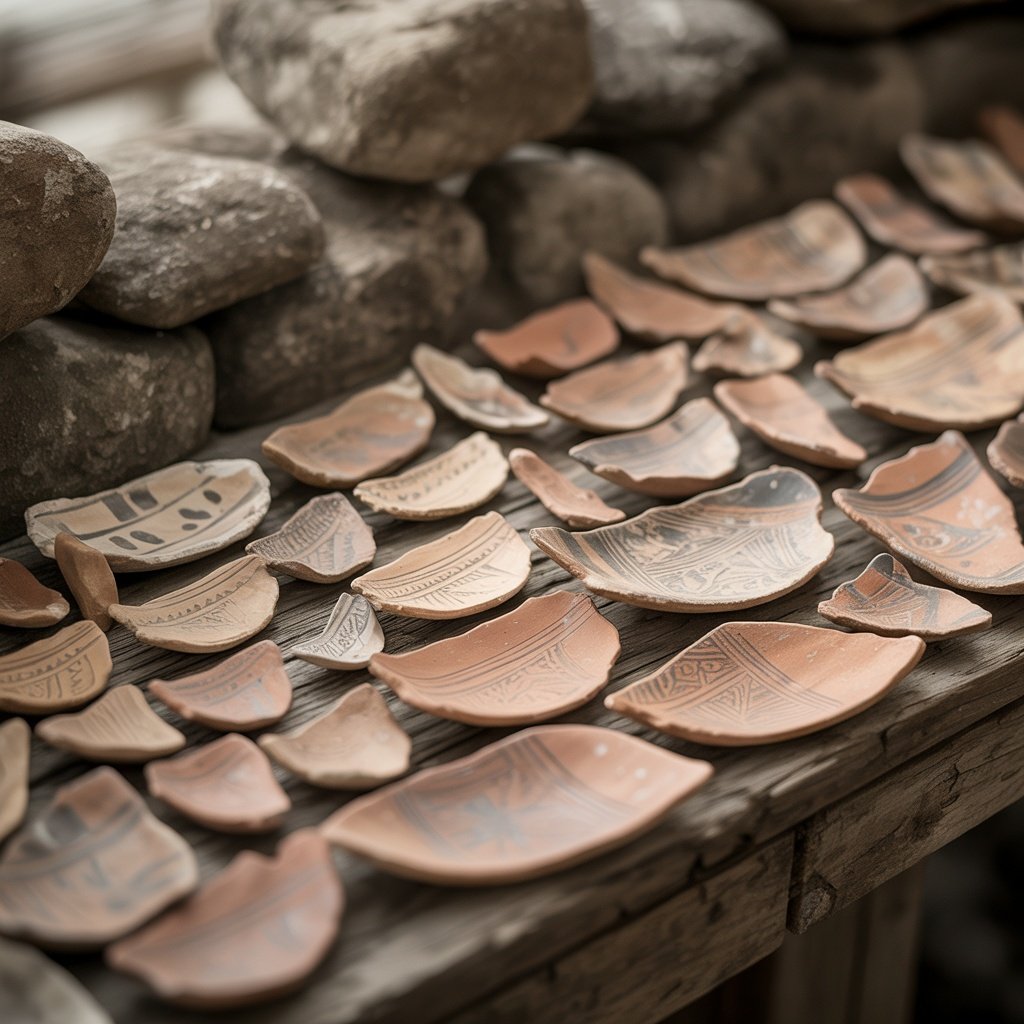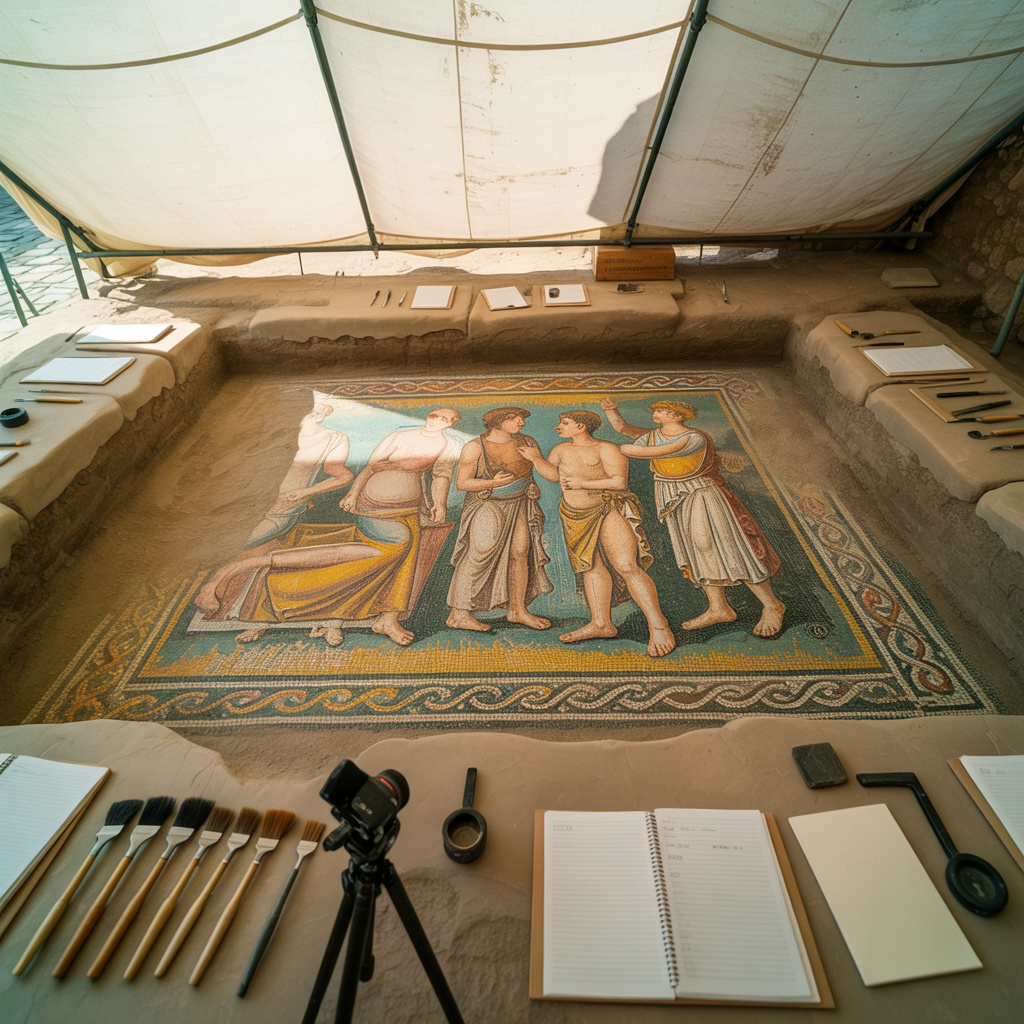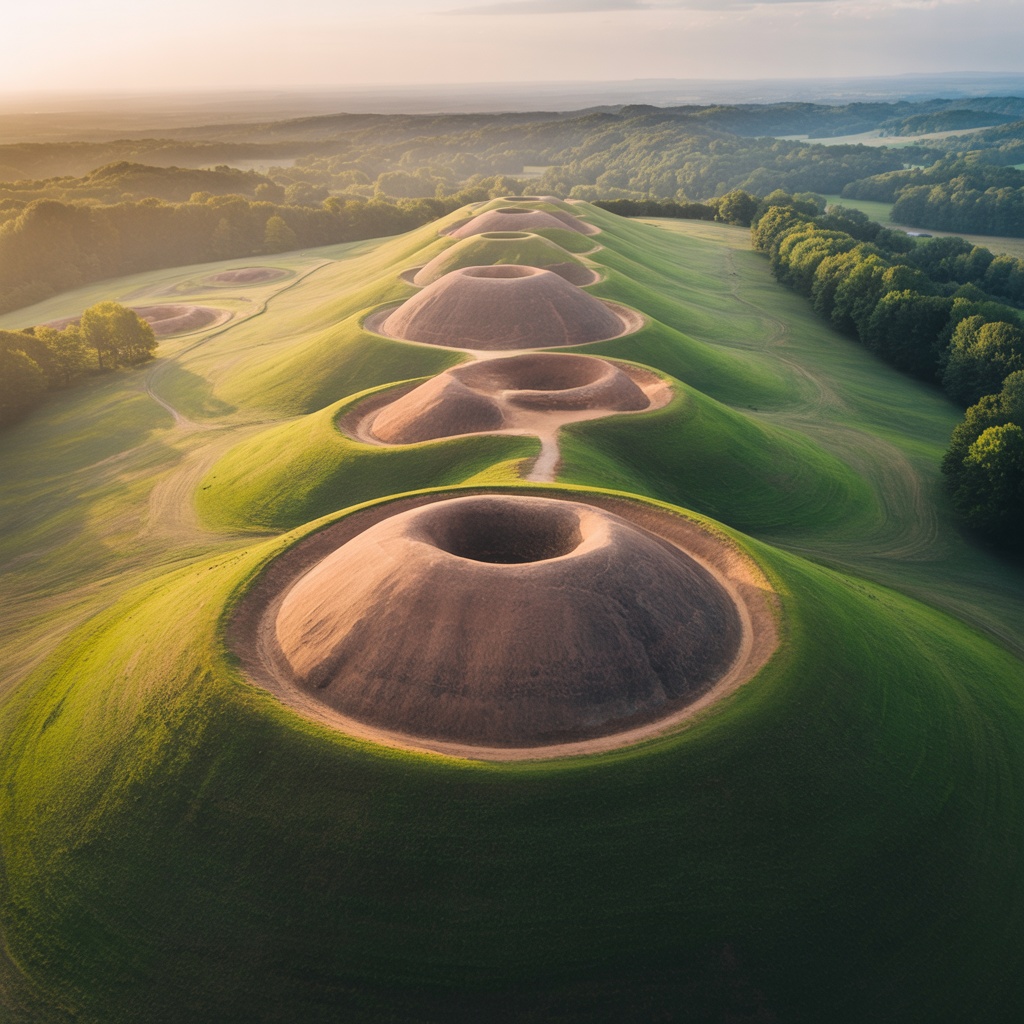The Kolomoki Mounds complex in southwestern Georgia stands as one of the most significant pre-Columbian archaeological sites in the southeastern United States. Constructed between 350 and 750 CE during the Woodland Period, this extraordinary earthwork complex features the largest platform mound built during this era and provides crucial evidence for understanding the social complexity, ceremonial practices, and technological capabilities of ancient Native American societies long before European contact.
As archaeological tourism specialists with extensive experience in North American indigenous sites, we've organised numerous expeditions to Kolomoki Mounds. This comprehensive guide explores the site's history, the mound builder culture that created it, significant archaeological discoveries, and practical information for visitors seeking authentic engagement with this remarkable testament to pre-Columbian engineering and social organisation.
The Kolomoki Site: Scope and Significance
Kolomoki Mounds Historic Park encompasses approximately 1,293 acres protecting eight major earthen mounds and associated village sites. The complex's centrepiece, Mound A, rises 56 feet above the surrounding terrain and measures approximately 325 feet in length and 200 feet in width at its base, making it the oldest and largest Woodland Period platform mound discovered in the southeastern United States.
The site includes several distinct mound types serving different functions: the great platform mound (Mound A), two burial mounds (Mounds D and E), and several smaller mounds whose purposes remain subjects of ongoing research. This diversity of mound forms within a single complex provides valuable insights into the social, political, and religious organisation of Woodland Period societies.
Dating and Chronology
Radiocarbon dating and ceramic analysis establish the primary occupation and construction period between approximately 350 CE and 750 CE, placing Kolomoki within the Swift Creek and Weeden Island archaeological cultures. The site's occupation predates the more famous Mississippian Period mound centres like Cahokia by several centuries, challenging earlier assumptions that complex mound-building societies emerged only during the later Mississippian Period.
At its peak around 500-600 CE, Kolomoki likely served as a regional ceremonial centre attracting populations from considerable distances for religious ceremonies, political gatherings, and exchange activities. Estimates suggest the resident population ranged from 1,000 to 2,000 people, with many more gathering periodically for ceremonial events.
The Mound Builder Culture: Who Created Kolomoki?

The term "mound builders" encompasses various Native American cultures across eastern North America who constructed earthen mounds for ceremonial, burial, and residential purposes over a period spanning roughly 3500 BCE to 1500 CE. The Kolomoki complex was built by Woodland Period societies, specifically people associated with the Swift Creek and Weeden Island archaeological cultures.
Social Organisation and Complexity
The massive scale of Mound A and the organised layout of the entire complex indicate sophisticated social organisation capable of mobilising large labour forces for communal construction projects. Archaeological evidence suggests an emerging social hierarchy, with elite individuals or families occupying positions of political and religious authority, though the degree of social stratification remained less pronounced than in later Mississippian societies.
The construction of Mound A alone would have required moving approximately 2 million cubic feet of earth, representing thousands of hours of organised labour. This achievement demonstrates not only engineering capabilities but also the social mechanisms necessary to coordinate large-scale cooperative efforts—likely combining communal labour obligations, religious motivation, and elite authority.
Cultural Practices and Beliefs
Burial practices documented at Kolomoki reveal important information about religious beliefs and social structures. The burial mounds (particularly Mounds D and E) contained individuals interred with elaborate grave goods including copper artefacts, marine shell ornaments, mica sheets, and ceramic vessels—materials obtained through extensive trade networks connecting the Gulf Coast, Appalachian Mountains, and Great Lakes regions.
The presence of both simple and elaborate burials within the same mounds suggests social differentiation, with certain individuals (possibly political leaders, religious specialists, or successful warriors) receiving more elaborate mortuary treatment. This variation provides evidence for emerging social complexity during the Woodland Period.
Archaeological Investigations at Kolomoki
Scientific investigation of the Kolomoki Mounds began in the 1930s when extensive excavations were conducted as part of Depression-era Works Progress Administration (WPA) archaeology programmes. These early excavations, while valuable, employed methods that would be considered inadequate by modern archaeological standards, and unfortunately, much contextual information was lost.
Early Excavations and Discoveries
The 1930s-1940s WPA excavations opened large areas of Mounds D and E, recovering hundreds of burials and thousands of artefacts. Among the most significant discoveries were elaborate copper ornaments, marine shell gorgets decorated with intricate designs, mica cutouts in animal and human forms, and numerous ceramic vessels representing various Swift Creek and Weeden Island styles.
These excavations also documented the mounds' construction techniques: builders used basket-loaded earth to gradually construct the mounds in stages, with identifiable layers representing different construction episodes. The earthen fills contained no stone (rare in southeastern Georgia), requiring workers to transport all materials from surrounding areas.
Modern Archaeological Research
Contemporary archaeological research at Kolomoki employs non-invasive techniques including ground-penetrating radar, magnetometry, and electrical resistivity surveys to investigate the site without destructive excavation. These methods have identified numerous previously unknown features including house structures, activity areas, and possible palisade walls surrounding the mound complex.
Recent research focuses on understanding the broader settlement pattern, subsistence strategies, and regional interactions. Analysis of plant and animal remains reveals that Kolomoki's inhabitants practised a mixed economy combining cultivated crops (primarily maize, beans, and squash), gathered wild plant resources, hunting (particularly white-tailed deer), and fishing in the nearby Chattahoochee River tributaries.
The Architectural Achievement of Mound A

Mound A represents an extraordinary engineering achievement for its time period. The platform mound's construction required careful planning, surveying, and staged building episodes spanning potentially several generations. Unlike the burial mounds (D and E), Mound A's flat top suggests it supported a structure—possibly a temple, elite residence, or council house—though no definitive structural remains have been identified.
Construction Sequence and Methods
Archaeological investigations reveal that Mound A was built in multiple stages, with each construction episode adding height and breadth to the previous structure. The builders first levelled and prepared the ground surface, then systematically added basket-loads of earth, creating identifiable layers or "zones" within the mound's structure.
The mound's stability despite centuries of weathering demonstrates sophisticated understanding of earthwork engineering. The builders likely employed techniques such as layering different soil types to control drainage, maintaining appropriate slope angles to prevent erosion, and possibly incorporating clay caps or other stabilising features.
Symbolic and Functional Significance
Platform mounds like Mound A served multiple functions in Woodland and later Mississippian societies. They elevated important structures above the ordinary plane of daily life, creating sacred or politically significant spaces. The height provided visual dominance over the surrounding landscape, reinforcing the authority of elite individuals or groups associated with the mound-top structures.
The labour investment required for construction may have served as a mechanism for social integration, bringing community members together in collective projects that reinforced shared identity and social cohesion. The mound itself became a material embodiment of the community's history and collective achievement.
Material Culture and Trade Networks
Artefacts recovered from Kolomoki provide evidence of extensive trade networks connecting the site to distant regions. Materials not locally available—copper from the Great Lakes region, marine shells from the Gulf Coast, and mica from the Appalachian Mountains—demonstrate long-distance exchange systems operating during the Woodland Period.
Swift Creek Ceramic Tradition
The Swift Creek ceramic tradition, closely associated with Kolomoki, features distinctive complicated stamped designs created by carving wooden paddles with intricate geometric and curvilinear patterns. These paddles were pressed into wet clay vessel surfaces, creating repeating design elements that varied across time and space.
Archaeologists have identified distinctive "paddle signatures"—unique carved paddles producing recognisable design elements—that can be tracked across the landscape, providing evidence for potter mobility, vessel exchange, and social networks. Some Swift Creek paddles used at Kolomoki produced vessel designs found at sites hundreds of kilometres distant, suggesting either potter travel or extensive vessel exchange.
Exotic Materials and Elite Status
The presence of elaborate items made from exotic materials in certain burials reflects emerging social differentiation. Copper ornaments required extensive trade networks and specialised metalworking knowledge. Marine shell gorgets decorated with complex iconography demonstrate both artistic sophistication and access to resources from coastal regions.
These prestige goods likely served as markers of elite status, political authority, or religious leadership. Their deposition in burials represents a permanent removal of valuable resources from circulation, a practice that reinforces social hierarchies by limiting access to prestigious materials.
Visiting Kolomoki Mounds State Park

Location and Access
Kolomoki Mounds State Park is located near Blakely in Early County, southwestern Georgia, approximately 180 miles south of Atlanta via Interstate 75 and State Highway 27. The park is open year-round from 7:00 AM to 10:00 PM, with the museum open Tuesday through Saturday 9:00 AM to 5:00 PM, and Sunday 2:00 PM to 5:00 PM (closed Mondays). A modest entrance fee ($5 per vehicle) supports park maintenance and archaeological preservation.
The Museum and Interpretive Centre
The park museum features one of the most unusual archaeological displays in the United States: visitors walk through an excavated portion of a burial mound (Mound E), observing in situ burial features preserved exactly as archaeologists found them. This unique exhibit provides an intimate view of ancient burial practices, showing multiple individuals interred with ceramic vessels, tools, and ornaments.
The museum also displays artefacts recovered from various Kolomoki excavations, interpretive panels explaining mound builder cultures, and detailed information about construction techniques and site chronology. A scale model of the entire complex helps visitors understand the spatial relationships between different mounds and features.
Trails and Mound Access
Several walking trails provide access to the major mounds and interpretive signage explaining each structure's function and significance. The main trail (approximately 1.5 miles) loops through the ceremonial centre, passing Mounds A, D, E, F, and G. Visitors can climb to the summit of Mound A via a constructed stairway, offering panoramic views of the surrounding landscape and perspective on the site's engineering achievement.
The park preserves natural forest environments similar to those that would have surrounded the ancient settlement, helping visitors imagine the site's historical context. Wildlife viewing opportunities include white-tailed deer, wild turkeys, and numerous bird species—animals that also provided subsistence resources for Kolomoki's ancient inhabitants.
Best Time to Visit
Spring (March-May) and autumn (October-November) offer optimal visiting conditions with moderate temperatures and attractive foliage. Summer months (June-August) bring high heat and humidity typical of southern Georgia, though the forested trails provide shade. Winter visits (December-February) offer mild temperatures and minimal crowds, though occasional cold snaps can occur.
Photography and Documentation
The aerial perspective proves particularly valuable for understanding the Kolomoki complex's layout and scale. The park occasionally permits drone photography with advance permission—contact park administration for current policies. Ground-level photography from Mound A's summit provides excellent views of the ceremonial plaza and other mounds. Early morning and late afternoon lighting enhances the mounds' topographic features.
Educational and Research Opportunities
Kolomoki Mounds serves as an important educational resource for understanding pre-Columbian North American societies. The site regularly hosts school groups, archaeology workshops, and public lectures by professional archaeologists. The park's interpretive programmes emphasise the sophisticated engineering, social organisation, and cultural achievements of Woodland Period Native American societies.
Archaeology Day Events
Annual Archaeology Day programmes (typically held in autumn) feature demonstrations of prehistoric technologies including flintknapping, pottery making, atlatl (spear-thrower) use, and fire starting. Professional archaeologists present current research findings and answer questions about ongoing investigations. These events provide excellent opportunities for visitors to engage directly with archaeological science.
Research Access
Professional archaeologists conducting research at Kolomoki must obtain permits through Georgia's Historic Preservation Division. The extensive collections from earlier excavations, housed at various institutions including the American Museum of Natural History and the Columbus Museum, remain available for study. Ongoing non-invasive research continues revealing new information about the site's extent and complexity.
Contextualising Kolomoki: Mound Builders Across Eastern North America
Understanding Kolomoki requires situating it within the broader context of mound-building traditions across eastern North America. These traditions span several millennia and multiple cultures:
Earlier Mound Building Traditions
The earliest earthwork constructions in eastern North America date to approximately 3500 BCE, with sites like Watson Brake and Poverty Point in Louisiana featuring elaborate earthwork complexes built by Archaic Period societies. These early mounds demonstrate that Native American societies achieved significant social complexity millennia before European contact.
Contemporary and Later Sites
Sites roughly contemporary with Kolomoki include the Hopewell centres in Ohio (200 BCE-500 CE), though Hopewell culture declined before Kolomoki reached its zenith. Later Mississippian centres like Cahokia (1050-1350 CE), Moundville (1000-1450 CE), and Etowah (1000-1550 CE) built even larger mounds, though Kolomoki's earlier date makes it a crucial predecessor demonstrating that platform mound construction and associated social complexity developed earlier than previously recognised.
For those interested in comparing mound builder sites, we arrange expeditions connecting Kolomoki with other significant locations. Our archaeological tourism services can coordinate visits to multiple sites, providing comprehensive understanding of pre-Columbian earthwork traditions. Visitors might also find interesting the controversial discoveries attributed to mound builders, examining how archaeological science separates evidence from myth.
Preservation Challenges and Conservation Efforts
Like all archaeological sites, Kolomoki faces ongoing preservation challenges. Natural processes including erosion, tree growth, and animal burrowing gradually affect the mounds' structure. Climate change brings increased rainfall intensity, potentially accelerating erosion. Careful management balances public access with long-term preservation needs.
Current Conservation Strategies
The Georgia Department of Natural Resources, which administers the park, employs various conservation strategies: monitoring mound stability, controlling invasive plant species, managing visitor traffic to minimise impact, and conducting regular assessments of the mounds' condition. The wooden stairway on Mound A prevents erosion that would result from visitors climbing directly on the earthwork.
Supporting Preservation
Visitors support conservation efforts by:
- Staying on designated trails and not climbing mounds except where permitted
- Reporting any observed damage or suspicious activities to park staff
- Not collecting artefacts or disturbing archaeological features
- Supporting park programmes through admission fees and donations
- Participating in volunteer opportunities for site maintenance
